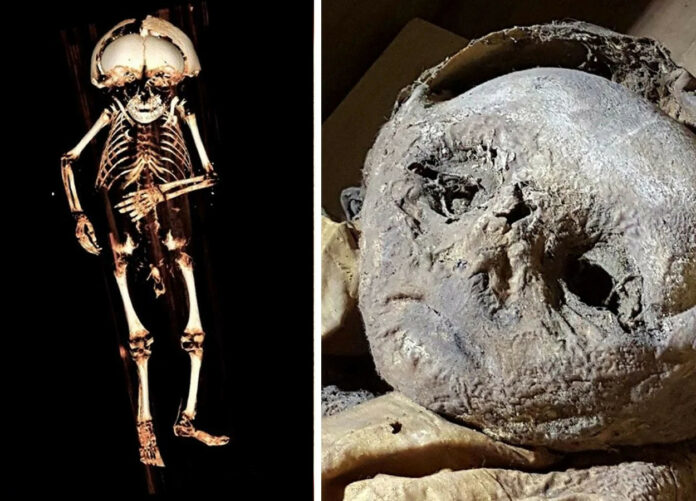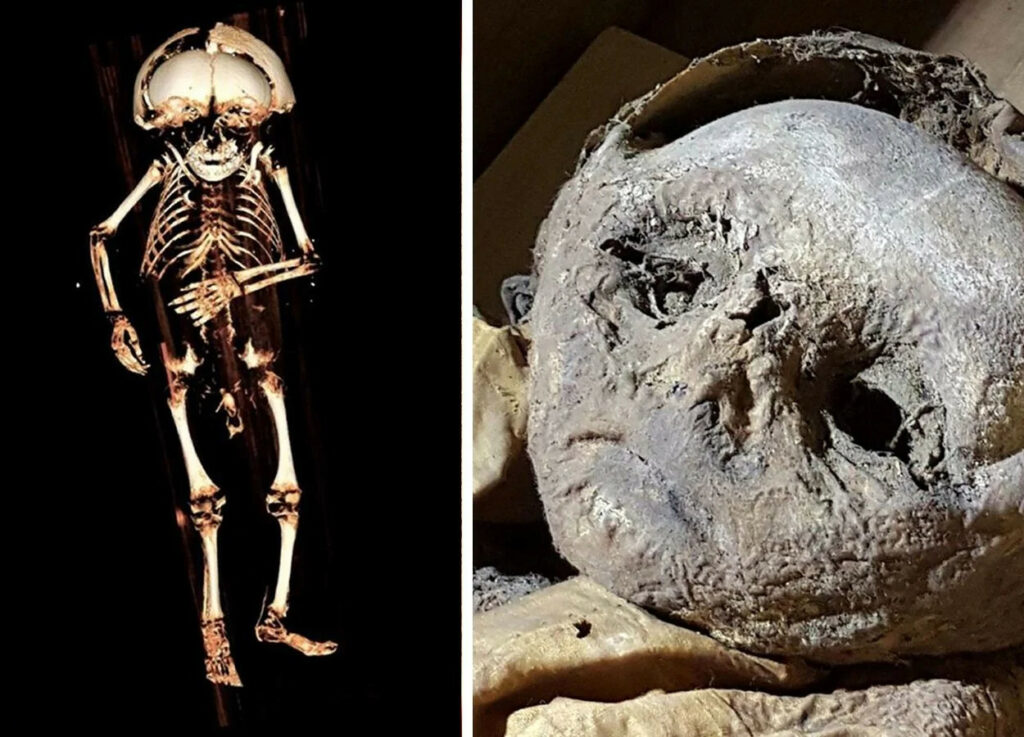In a remarkable discovery that sheds light on the often-overlooked challenges of aristocratic life during the Renaissance era, a “virtual autopsy” conducted on the mummified remains of a young toddler buried in a family crypt in Austria has revealed a heartbreaking tale of malnutrition and early demise. This tragic case serves as a poignant reminder that even the privileged were not immune to the perils of their time, underscoring the importance of understanding the lived experiences of past populations, regardless of social status.
The Privileged Life and Somber End of Reichard Wilhelm
The subject of this study was believed to be Reichard Wilhelm, the first-born son of a prominent Count of Starhemberg, a member of the Austrian aristocracy during the Renaissance period. Despite his privileged upbringing, the team of German scientists who conducted the research, led by pathologist Andreas Nerlich, concluded that the young boy, who lived between the 14th and 17th centuries, experienced “extreme nutritional deficiency and a tragically early death from pneumonia.”

Telltale Signs of Vitamin D Deficiency
The CT scans performed on the mummified remains revealed telling malformations on the boy’s ribs – classic signs of malnutrition, indicative of a condition known as rickets. These malformations, termed a “rachitic rosary,” occur when knobs of rib bone begin to resemble rosary beads due to a severe vitamin D deficiency.
A Paradoxical Condition
Interestingly, the boy’s remaining soft tissues showed that he was overweight at the time of his death, eliminating the possibility of underfed. According to Nerlich, “The combination of obesity along with a severe vitamin deficiency can only be explained by a generally ‘good’ nutritional status along with an almost complete lack of sunlight exposure.”

A Resting Place Fit for Nobility
The child was found buried inside a wooden coffin that proved too small for him, as evidenced by the deformation of his skull. The crypt where he was laid to rest was reserved exclusively for descendants of the Counts of Starhemberg, specifically their first-born sons who would have been titleholders, as well as the men’s wives.
Radiocarbon dating of a skin sample suggested he was buried between 1550 and 1635, although building records indicate that the crypt underwent a renovation around 1600, suggesting he was likely buried after that date. He was the youngest person buried in the crypt.
Implications and Significance

Nerlich emphasizes the need to “reconsider the living conditions of high aristocratic infants of previous populations,” as this tragic case highlights the unexpected perils that even the privileged could face in the absence of proper sunlight exposure. The study serves as a poignant reminder that wealth and status did not necessarily equate to good health and longevity, even for the nobility of the Renaissance era.
Conclusion
The heartbreaking story of Reichard Wilhelm, the first-born son of a prominent Austrian Count, underscores the complex and often overlooked challenges faced by even the most privileged members of society during the Renaissance period. This tragic case, uncovered through the innovative use of “virtual autopsy” technology, sheds light on the lived experiences of the past and reminds us that wealth and status were no guarantee of health and longevity. As we continue to unravel the mysteries of the past, it is crucial that we approach the study of history with empathy and a deep appreciation for the human stories that lie beneath the surface.

